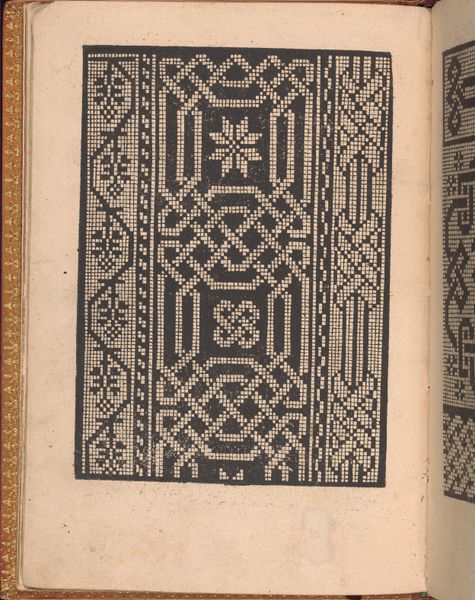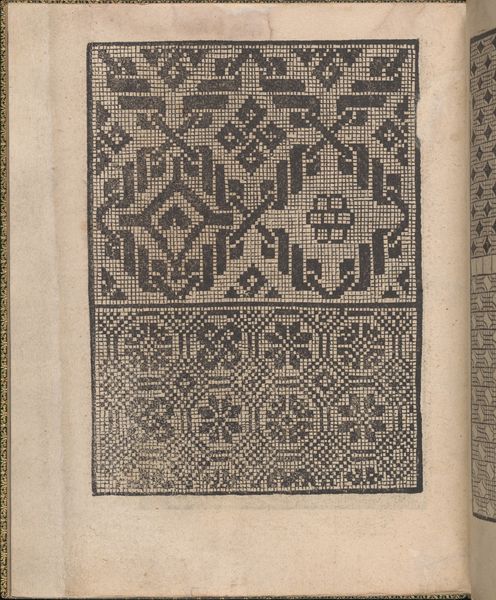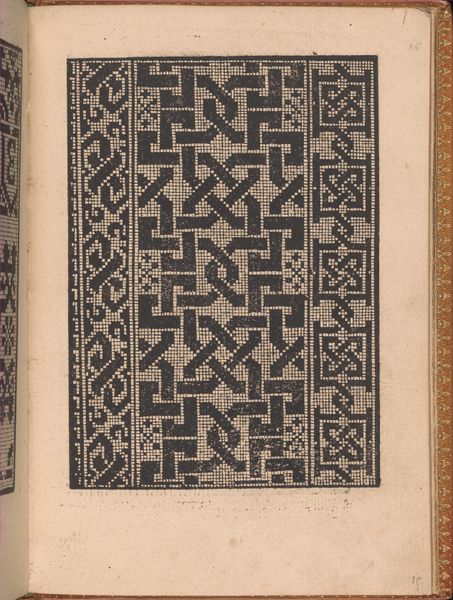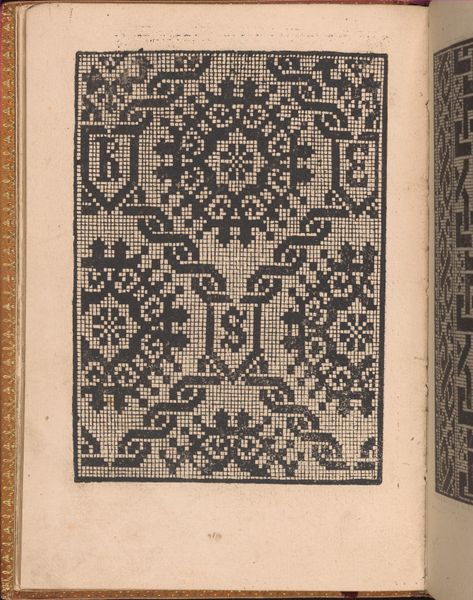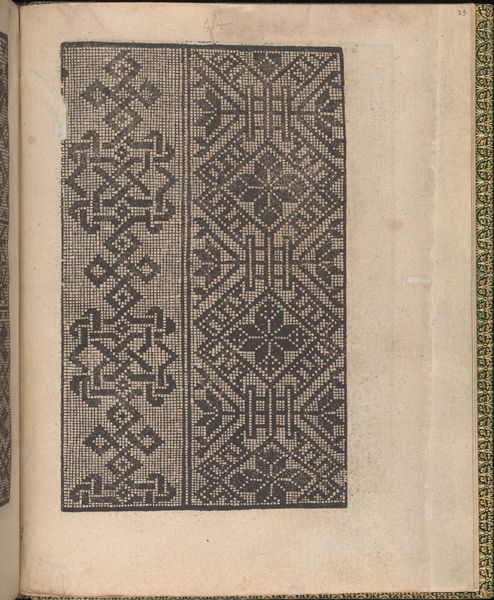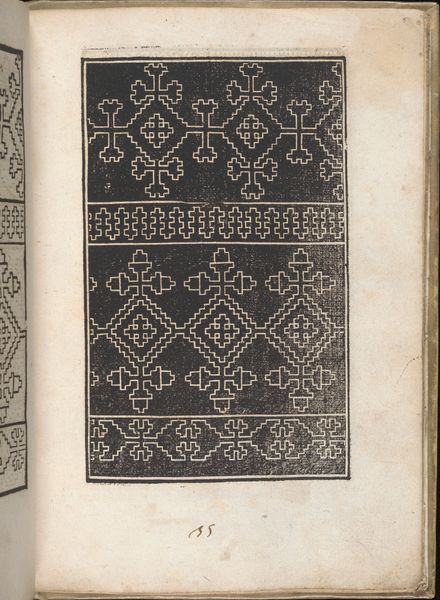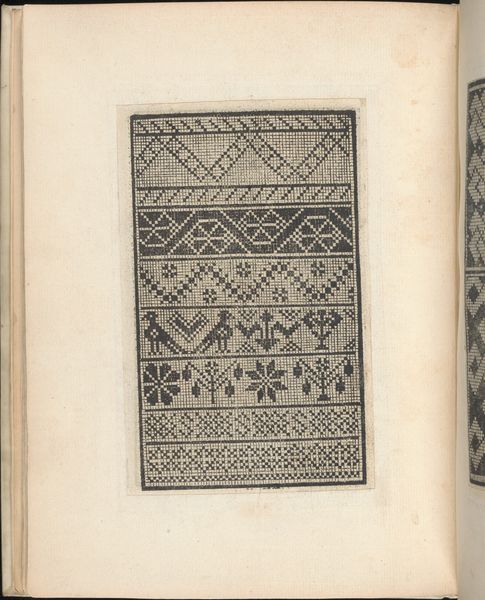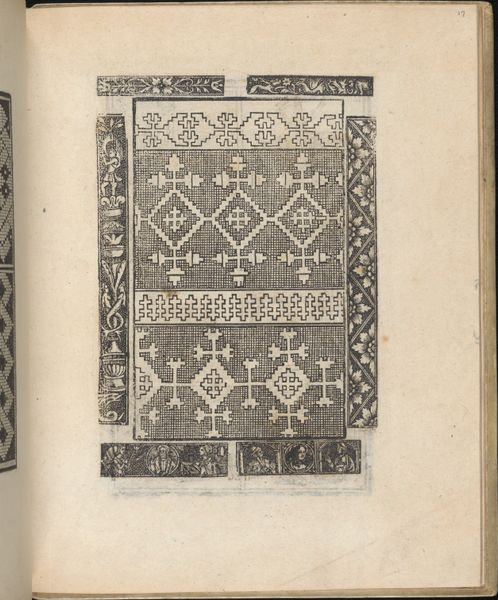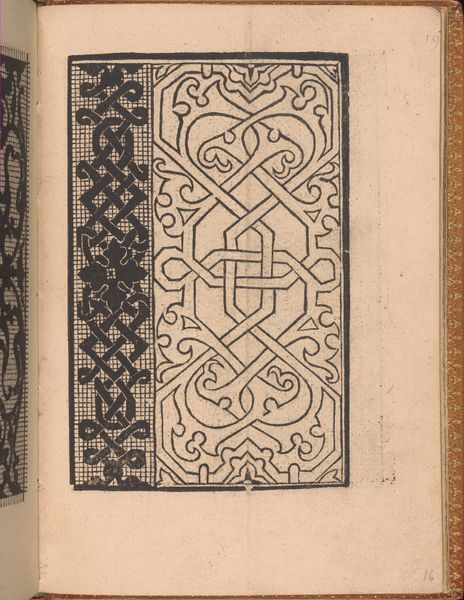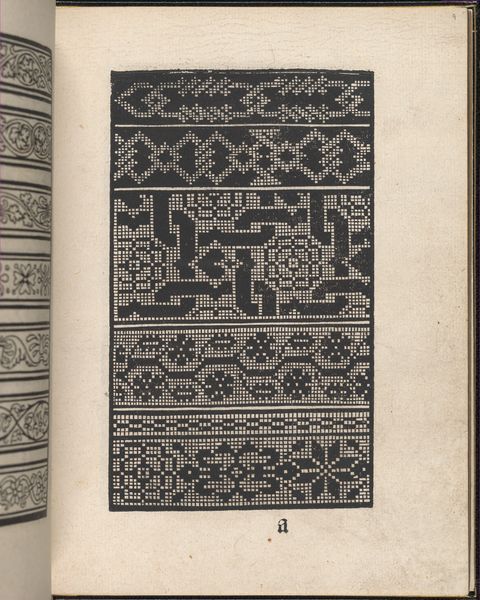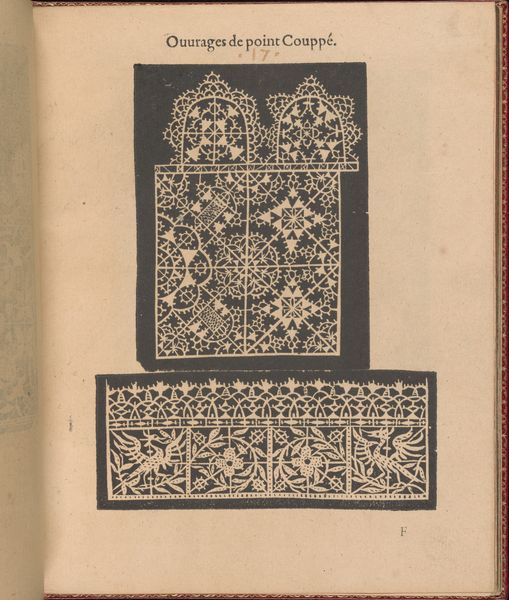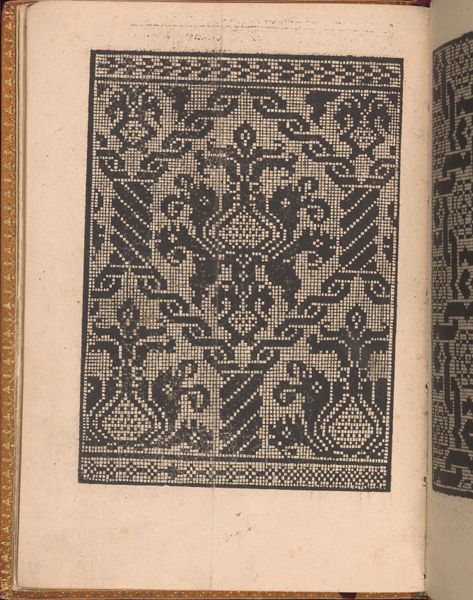
drawing, print, engraving
#
drawing
#
medieval
# print
#
geometric
#
line
#
engraving
Dimensions: Overall: 7 7/8 x 5 1/2 in. (20 x 14 cm)
Copyright: Public Domain
Nicolò Zoppino’s “Convivio delle Belle Donne”, a woodcut printed in Venice around 1529, displays geometric knot designs that transcend mere decoration. These complex patterns, rendered in stark black ink, reflect a cultural fascination with interlaced motifs, deeply rooted in history. We see echoes of these forms across diverse cultures, from Celtic knotwork adorning ancient stones to Islamic geometric designs gracing mosque walls. These patterns are not merely aesthetic; they are imbued with symbolic power. In many traditions, knots represent the interconnectedness of life, the eternal cycle of birth, death, and rebirth. Consider the endless knot in Tibetan Buddhism, a symbol of the infinite wisdom of the Buddha, or the Gordian knot of Greek legend, famously severed by Alexander the Great. These motifs speak to our collective unconscious, tapping into primal fears and desires, reflecting the human need to impose order on the chaos of existence. The emotional resonance of these images lies in their ability to evoke a sense of continuity and mystery, engaging us on a profound, subconscious level. These patterns are not static; they evolve, resurface, and take on new meanings, reflecting the ever-changing currents of human culture.
Comments
No comments
Be the first to comment and join the conversation on the ultimate creative platform.
